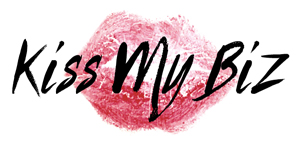Press releases (also known as news releases or media releases) are a PR tool used to tell members of the media (including bloggers, webmasters in your niche, etc.) about your company news. Paid and free press release distribution sites (such as PRweb and PR.com) have made press releases an attractive and affordable publicity tool to a growing number of small and online business owners.
There are three keys to a successful press release:
- A quality news angle (never send a press release if you don’t have real news)
- A well-written release (following proper formatting, writing styles, etc.)
- A tailored press release distribution plan (there isn’t a one-size-fits-all solution to distribution)
This guide will walk you though the components of a press release and offer several press release writing tips you can use when learning how to write a press release for your business.
Press Release Components
- Release time – The top of a press release should either have “FOR IMMEDIATE RELEASE” or an embargo date listed (EMBARGOED UNTIL DATE) if the news isn’t to be published immediately.
- Headline – The headline is like the title of your press release. It should grab the reader’s attention, make them want to click or read more, and still manage to introduce the news angle itself.
- Summary – Press release summaries are popular in online press release distribution. This should be a two to four sentence summary of the news, expanding on the headline but not as detailed as the press release body. When using offline press release distribution methods, this can be substituted with a one-line sub-heading.
- Dateline – The dateline of a press release comes directly before (but on the same line as) the opening body paragraph. It will include the hometown of the company issuing the news release as well as the release date.
- Press Release Body – The first body paragraph of a press release should briefly answer the questions of who?, what?, when?, where?, and why?. Following paragraphs will include supporting details and often a quote from a representative of the company.
- Boilerplate – A press release boilerplate is a short backgrounder on the issuing company, person, or organization, generally no longer than one paragraph.
- Call to Action – The call to action invites the reader to get in touch with you for any additional details they may need in writing a story.
- Contact Information – At a bare minimum include a media contact name, phone number, and email address. It never hurts to include a mailing address, cell, or fax number as well.
- Closing – All news releases should contain a closing mark (often ### or -30-), which signifies to the reader that there’s nothing more to come. If a release goes to a second page, the first page should be marked with something like -more- to make it clear that another page will follow. You can list any addenda (such as photos) just before the closing.
Proofread your press release carefully before distributing it to journalists or posting it to a press release distribution site. If you’re still not confident enough to write your own news release given these tips and template, hire a press release writer or PR firm to write your release for you.
Tips & Tactics
Helpful advice for making the most of this Guide
- Try to keep a press release to one page whenever possible. People don’t generally have a long attention span when reading them.
- Only send a press release when you have press release ideas with real news to distribute. Littering the Web or hounding journalists with too many “fluff” releases can damage your chances of coverage in the future.
- Write using the journalistic inverted pyramid style (with the most important information coming first, and working down to less vital, supplemental details).
- A release in the 300 – 400 word range is often adequate. If your press release is longer than that, see if you can cut something without losing effect before deciding to keep the longer copy.
- Don’t forget to add complete contact information!
- Publish your press release to your company website. This creates an archive of your news for journalists to later refer to, and makes your press releases more directly accessible to your customers, clients, or visitors.
- Publish your press release to an online press release distribution service that will get it listed in news engines such as Google News or Yahoo! News. This makes your press release available via search. Paid services such as PRWeb can do this. Some free services, like PR.com, can get a press release listed in Google News as well, although you generally have to pay to include live links.
- Write using short paragraphs and sentences.
- Avoid testimonials or other promotional language. A press release is news; not advertising.
